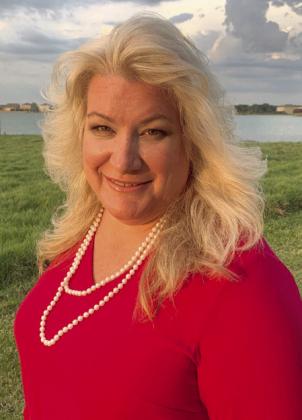Hola! With this month’s guest column, we wish to celebrate our more than 200,000 Osceola County residents of Hispanic descent (many who represent the OCOA family) during national Hispanic Heritage Month. We appreciate each and every one of you and thank you for your unwavering support.
“As an American of Hispanic descendant, I feel honored to have the opportunity of celebrating my culture and other Hispanic cultures with everyone,” said Wilda Belisle, OCOA’s Senior Vice President of Meals on Wheels & Dining Clubs. “It is an opportunity to celebrate and recognize the contributions and the positive impact the many Hispanic Americans have made throughout our history.”
Hispanic Heritage Month has been celebrated in the United States for more than 30 years to recognize the achievements of Hispanic Americans. According to National Public Radio, Hispanic Heritage Month began as a week-long celebration in 1968 under President Lyndon Johnson who, at the time, stated in his proclamation, “It is with special pride that I call the attention of my fellow citizens to the great contribution to our national heritage made by individuals of Hispanic descent—not only in the fields of culture, business, and science, but also through their valor in battle.”
It was not until 1988 that President Ronald Reagan extended the celebration to 31 days. The annual observance now runs from Sept. 15 through Oct. 15. Though this time frame may seem untraditional, the dates were established to coincide with the independence days of Guatemala, Honduras, El Salvador, Nicaragua, and Costa Rica.
As I began researching the many historical aspects of this month’s observance, I found several interesting facts and statistics: The term Hispanic was recognized by the U.S. government in the 1970’s after population data was collected by Mexican American and Hispanic organizations. In 1976, Congress passed a law that information on residents from Spanish speaking countries be officially recorded. Since then, Hispanic appears as an “ethnicity” in various forms for government, education and employment purposes.
In 2021, Forbes magazine reported that more than 559 million people speak Spanish around the world. Out of that number, 460 million people are native speakers, making it the second largest population of native speakers behind Mandarin.
According to Babbel, a subscription-based language learning platform, English takes the top spot as the most spoken language in the U.S. with 254 million. Spanish comes in second with 43 million speakers. Forbes also reported it is expected that one in three individuals in the U.S. will speak Spanish by the year 2050.
The Pew Research Center reported there are nearly 62.1 million Hispanics in the U.S., equating to 19 percent of the total population. Over the past decade, from 2010-20, the U.S. population grew by about 23 million, with Hispanics making up 51 percent of that increase.
As of 2019, Mexicans comprised nearly 62 percent of the U.S.’ Hispanics, followed by Puerto Ricans and Cubans. Also reported by Pew, in 2013, 55 percent of the country’s Hispanic population lived in three states: California, Texas, and Florida. This statistic remained accurate in 2020 findings, with North and South Dakota experiencing the fastest growth in Hispanic populations.
This year’s Hispanic Heritage Month theme is: “Unidos: Inclusivity for a Stronger Nation.” So, as we celebrate the observance, let us do so with the passion and mindset of what inclusivity means: the practice of providing equal access to opportunities and resources for people who might otherwise be excluded or marginalized. Just maybe, with this mindset, we can all help build a stronger, less divided, and more inclusive nation.




